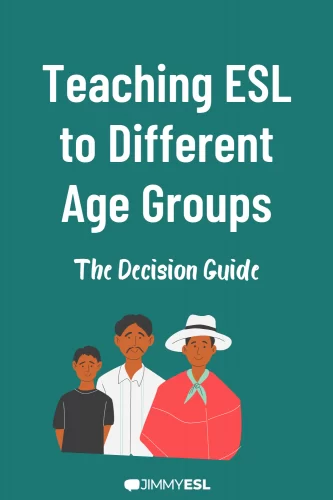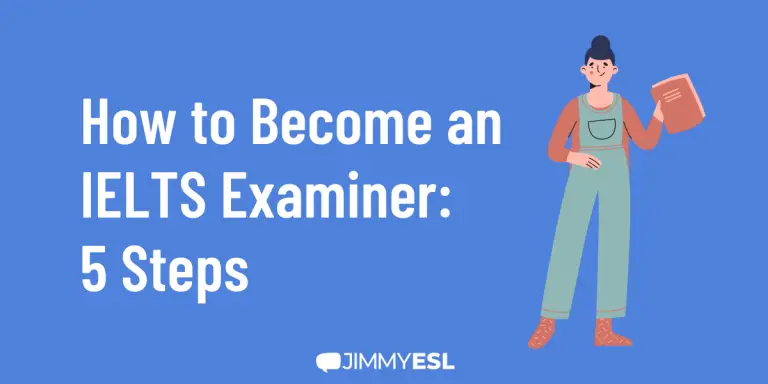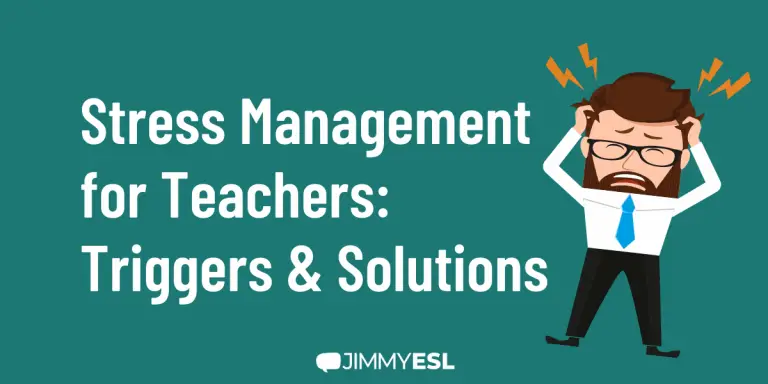Teaching English to Different Age Groups: The Guide
A common theme among ESL teachers is having a strong preference for teaching specific ESL age groups. This is really no different from licensed teachers who specialize in teaching subjects to specific student age groups or student levels.
Much of this may be attributed to one’s personality type and the comfort level one feels with people of certain ages. Other factors, such as previous work or life experience, and the demands of the ESL job market, can also greatly influence ESL teachers’ career paths and the age groups they eventually gain most experience working with.
In this article, you’ll learn anything you need to know to decide: Which Age Group Should You Teach?

Types of Teachers in the ESL Teaching Industry
In nearly every major ESL job market, you will find teachers working in different capacities and contexts. Most of these correspond to specific ESL age groups:
- Preschool/Kindergarten ESL Teachers
- Elementary School Teachers
- High School Teachers
- University Teachers
- Standardized Test Preparation Teachers (e.g., TOEFL, IELTS)
- Business English Teachers
- Conversation Teachers for Adults
It’s often the case ESL teachers fit tightly into one of these capacities, though some teachers are more versatile in their ability to work across the spectrum.
For example, most Business English Teachers find it difficult to work with toddlers because their personalities and life experience tend to lean more towards adult interactions. The reverse is also often true, where the Preschool ESL teacher has little interest or desire to teach Business English.
If you’re relatively new to teaching, an important step in your decision-making process is understanding your personality type and preference of ESL age levels to teach. You should be clear about that before making any major commitments such as moving abroad and accepting a teaching you will not enjoy.
Beware of falling into the trap of concentrating only on the salary without taking into consideration whether you will be able to withstand the job.
ESL Job Market Demands
Another factor you need to consider is the job market itself.
In China, the highest demand for ESL teachers is among young learners. (However, due to the new legislation in China, called the “foreign teacher ban“, the demand isn’t nearly as big as before.) The same applies to other countries in south-east Asia and Latin America.
This contrasts with markets like Japan or Russia, where there is a significant demand for ESL teachers to teach adult ESL learners, but where the earning potential may not be as lucrative.
If you teach in regular schools in your home country, you will teach mainly kids and teens. For online teachers, opportunities to teach young and adult learners are available equally.
The ESL job market, is more favorable, of course, to more adaptable ESL teachers who can switch gears and work with different age groups effectively. ESL teachers who can align themselves to the job market, rather than expecting the job market to align to them, will have better opportunities and earning potential.
For the most part, ESL employers are blind towards a teacher’s preferences for teaching specific groups of age levels. Rather, employers are more concerned with the teacher’s credentials (native fluency, university degree, TEFL certification, teaching experience).
Therefore, at present, the hiring practices of most schools and organizations in the ESL industry are not designed to effectively recruit and select teachers based on age group preferences and experiences.
Understanding Different Age Groups and How to Teach Them
Let’s look at the various ESL age groups, the typical characteristics of ESL learners in each group, and what methodologies are effective for working with each group.
| ESL Age Group | Age Range |
|---|---|
| Preschool/Kindergarten ESL Learners | 3 – 5 years |
| Elementary School ESL Learners | 6 – 12 years |
| High School ESL Learners | 13 – 17 years |
| University ESL Learners | 18 – 25 years |
| Adult ESL Learners | 18+ years |
Preschool/Kindergarten ESL Learners
Many ESL teachers cringe at the thought of teaching preschool learners. It is often equated to babysitting, except there can be as many as 15 – 25 students in a preschool ESL class, and that is definitely not babysitting!
Teaching preschool English classes is undoubtedly challenging, and you will need a high level of energy. Yet, preschool ESL classes can be extremely rewarding for teachers, both intrinsically and financially.
If you have the right personality type and use effective teaching techniques, preschool lessons can be a lot of fun. What’s more because parents are invested in their children’s education, there is the potential to earn a higher income with preschool lessons.
Characteristics of Preschool ESL Learners
Preschool learners are particularly challenging because of their shorter attention spans, so teaching at this level requires patience as well as teaching techniques to hold the attention of the students.
It goes without saying that formal training in early childhood education is a key factor in a teacher’s effectiveness with this group, as there are many unique aspects to teaching preschool learners.
Unlike older learners, preschools learners do not generally learn in a compartmentalized manner. At this age, children are practically taking in everything, so their learning experience is more integrated, and requires a combination of visual, physical and aural activities. Much of their language learning experience at this stage is through repetition, and one-sided communication between teacher and student.
Here is a video by Wattsenglish of an actual ESL class for preschool children in Czechia:
Here is another example of Mark Kulek teaching a class of kindergarten ESL learners in Japan:
Here is yet another example of Teacher Marco eliciting high engagement from this class of Japanese ESL preschool students:
In each of these examples, it’s evident that the teachers engage very young learners by using a number of techniques:
- Give clear and simple instructions to guide students throughout the lesson
- Ask age-appropriate questions to capture interest and elicit responses
- Engage students using Total Physical Response (TPR) to help aid understanding and internalization of English
- Incorporate high-energy activities, songs, stories, games, and dance throughout the lesson
- Have fun, and make it fun for the children
- Set up the lesson for children to feel comfortable and safe with you
- Use teaching aids like flash cards, balls, and other props
- Use of encouragement
Characteristics of ESL Teachers who Perform Well with Preschool ESL Learners
Without a doubt, ESL teachers who thrive with very young learners are:
- Adaptable
- Communicative
- Creative
- Empathetic
- Energetic
- Observant
- Patient
- Playful
To be an effective ESL teacher for this age group, you really do need all of the above traits. Formal training in Early Childhood Education would definitely be a valuable credential for teachers who want to work with Preschool/Kindergarten ESL learners. If you’re still undecided if this is the right age group for you, FutureLearn offers a course: English in Early Childhood: Language Learning and Development. The teaser version offers free access to the course for 8 weeks.
Elementary School ESL Learners
Because Elementary School ESL learners fit inside a group with a wider age range, anyone intending to teach this age group should have a high level of patience and be adaptable. As with Preschool learners, teaching English to kids can be extremely rewarding on a personal level, and be lucrative due to the high investment parents make in their children’s education.
ESL teachers who teach this age group can earn decent incomes and supplement that income through private tutoring and online ESL teaching.
Because of the wider age range of this group, there are going to be some major differences in the characteristics between younger and older Elementary ESL learners. Still, there are several commonalities. Elementary ESL students learn English:
- As an independent subject or subjects
- For contexts (greetings, introductions, expressing feelings and opinions, making descriptions, etc.)
- With an emphasis on correct pronunciation and grammar use
- With a focus on specific skill-building in listening, reading, speaking, and writing skills development
In addition to these, Elementary ESL learners participate in a range of activities to evaluate and strengthen both general and specific English language proficiency. These can include participating in tests, speech or public speaking competitions, English clubs, English camps, and other school-organized projects and activities.
One major theme for Elementary ESL learners is that during these formative years, they begin to develop two-way communication skills: they learn to express their feelings and opinions, describe people, places and objects, and apply critical thinking skills to solve problems.
In essence, they gradually shed their dependency on the ESL teacher, and develop some independence using English to communicate and accomplish tasks.
As their ability to listen, read, speak and write also improves, their exposure to English extends beyond what they learn in the classroom, through various media such as moves, and life experiences such as world travel.
In the below lesson, you can see how Teacher Matthew Van Orden effectively teaches a Grade 5 ESL class in China.
Key aspects of his methodology are:
- Providing clear instructions and guidance throughout the lesson
- Use TPR to encourage and reinforce language acquisition
- Using a quick warm-up activity (games, songs, play) to set up the lesson and create a comfortable space for learners
- Set classroom rules at the start of the lesson
- Establish the lesson learning goals and stay on point
- Engaging the whole class as well as individual students
- Creating a safe and comfortable environment for students
- Correct students and have them make the corrections
- Give continuous positive feedback
- Make it fun
Characteristics of ESL Teachers who Perform Well with Elementary School ESL Learners
Teaching Elementary ESL students requires a high level of energy, positivity, and patience. ESL teachers should be effective at guide and engaging students using a blend of activities, games, play, quizzes, stories, arts and crafts, and other techniques.
For Lower Elementary ESL classes, many of the characteristics for teaching Preschool will carry over. ESL Teachers should be:
- Adaptable
- Communicative
- Creative
- Empathetic
- Energetic
- Observant
- Patient
- Playful
Older Elementary ESL students have developed some abilities to communicate independently. Typically, they are able to describe objects and simple concepts, and express basic feelings and opinions. They can construct more cohesive sentences and use descriptors and modifiers, albeit with some imperfections, which ESL teachers should help them overcome.
ESL teachers working with Upper Elementary students should develop and organize their lessons around encouraging more independent communication, where students not only interact with the teacher, but also with each other, in English, using both group activities and independent exercises.
An emphasis should be made on encouraging improvement and use of complete sentences, correct pronunciation and intonations.
High School ESL Learners
High School ESL learners can be challenging, yet rewarding to teach if the teacher has the right skill set. As high school students transitioning into adolescents, many personal, social, and psychological aspects come into play, and teachers need to be equipped to work effectively with this age group.
Aside from these, High School ESL learners have academic pressures as they prepare themselves for post-secondary education. Depending on the location and culture where your ESL classes are, academic pressures can be intense.
For example, Chinese students have high stress levels due to the pressures placed on them, not only by the Chinese education system itself, but also from well-meaning but demanding parents, who want to ensure their children’s success. In fact, these pressures begin as early as primary school, but naturally intensify as students prepare for entrance into university.
It’s important that ESL teachers are cognizant of these pressures, and create an open and positive dialog with their students. It’s also vital that ESL teachers don’t limit their lessons to pure teaching, but allow an outlet for students to enjoy learning through games.
One great benefit of teaching this student age level is that they have typically developed a higher level of competency in English, coupled with analytical skills. This gives teachers a wider range of topics to cover, and opportunities for students to apply their critical thinking skills.
Here is a class of High School ESL students in a demonstration lesson in Japan. Professor Shawn Clankie gives a brief self-introduction, confirms with the students that they can follow his pace of speech, then organizes the class into groups to complete a task: What is the best way to improve your English ability?
He employs a mixture of group work and class discussions throughout the lesson. He asks relevant questions to encourage student participation.
Notice he is wearing a suit and tie, as this is a Japanese ESL class, and Japan is largely a formal culture. Therefore, he is well aware of the cultural expectations of a teacher and the respect that is attached to the role.
Here is a small class of High School ESL students playing a vocabulary review activity. The students are highly engaged throughout the activity. Before the activity, the teacher organizes the class into teams, and sets up the activity by giving clear instructions about how to perform the activity.
Rather than teaching via the typical word review, the ESL teacher has tasked the students to elicit the words from their team members. This increases their talk time, reduces the teacher’s talk time, and makes the learning experience more fun.
Characteristics of ESL Teachers Who Perform Well with High School ESL Students
Some ESL teachers prefer to teach High School ESL learners because the students typically have acquired a level of fluency that makes the lesson more discussion-oriented and allows for group activities. However, with this ESL age group comes some challenges mentioned, as well as possible behavioral issues with some students.
To teach effectively at the High School ESL learner level, an ESL teacher should:
- Be calm and composed
- Provide clear instructions and guidance at the start of the lesson
- Be effective at engaging students through questions and discussion topics
- Have a range of activities that can be performed both individually and in groups
- Be able to explain ideas, concepts, and language functions clearly and comprehensively, and to elicit student input and analysis with these
- Manage and limit their talking time to allow more student interaction
- Wear appropriate attire (aligned with cultural expectations) to command respect from students
- Be aware and respectful of cultural norms and nuances
University ESL Learners
Teaching ESL classes to university students has a certain allure, because of the prestige that comes from being a university teacher or lecturer. However, gaining employment at a university often requires an ESL teacher to have some credentials, such as a postgraduate degree and some years of teaching experience.
University ESL classes can also have very diverse goals and content. For instance, university ESL classes can be centered on developing academic writing skills, listening and speaking skills, presentation skills, and English literature.
University ESL learners often extend their education outside of the university’s official courses. Many University ESL learners enroll in courses for to prepare for taking IELTS, TOEFL, or TOEIC, which are often required for admission into a university, or to satisfy a job requirement.
So, opportunities for teaching this ESL age group can be lucrative, but also require specific knowledge and experience in the aforementioned subject areas.
One of the most distinguishing aspects of teaching University ESL classes is that by this stage of their lives, students have generally developed strong critical thinking skills and opinions. On the other hand, one of the challenges with this group is that they have often not developed the ability to express themselves fluidly in English.
This is sometimes due to cultural factors, such as cultures where expressing one’s opinions about certain topics is often perceived inappropriate or taboo. It can also be a consequence of having endured ESL education heavily focused on the mechanics of the language, rigorous test taking, and a lack of consistent exposure to English outside the classroom.
In the below video, Professor Roberto Guzman talks about ESL classes he has taught at the University of Puerto Rico. In this TEDx Talk, he discusses how his early lessons were heavily designed around English language mechanics, and how he came to the conclusion that these lessons were disempowering his students for life after studies.
As a result, his students were ill-prepared for careers in which applied critical thinking skills in English are necessary. He changed up his mode of teaching, no longer focusing on grammar and parts of speech, and formulated his lessons around encouraging students to develop and utilize their critical thinking skills in English.
Characteristics of ESL Teachers Who Perform Well with University ESL Students
ESL teachers who perform well with University ESL learners tend to have a preference for interactions with adults. Aside from their credentials, teachers who enjoy working with this ESL age group are effective at engaging learners with topics that require a high degree of maturity and critical thinking.
Though it is possible to make lessons fun through games, most students are focused on improving their English proficiency to attain a high score on tests such as IELTS, TOEFL, or TOEIC. They may even be required to attain a minimum score on local standardized tests in order to graduate.
ESL teachers should be capable of creating opportunities for interaction through an array of topics and themes centered around historical as well as current events, predictions about the future, and concepts about society, morality, and ethics.
At the same time, anyone considering teaching ESL abroad at the university level should have a level of composure and cultural sensitivity, to avoid topics or themes that can offend or violate local laws.
Adult ESL Learners
Although technically, university students are adult ESL learners, there is usually a distinction in priorities between university students who learn English and adults who are in the workforce, and adult ESL learners often have diverse reasons for learning English.
While many adult ESL learners enroll in English conversation classes at a private language school, it is also common for them to hire an ESL teacher and take private lessons with them. In either of these cases, adult ESL learners are learning English out of their desire or need to become proficient.
Others may be learning English because the company they work for has arranged ESL lessons for them. While in these cases, many classes are focused on conversational English, a large proportion of the Business English courses are focused on developing soft skills, such as presenting, meeting, negotiating, and writing business documents in English.
There are a number of ESL teachers who only want to teach adults. They feel more inclined to interact with students closer to their age, who can relate and discuss topics and concepts that they may share common views, or focus on themes which are relevant to their generation.
Not every teacher can relate well with younger ESL learners, particularly due to generational gaps, but can relate very well with mature learners.
Many ESL teachers also view teaching this ESL age group as a way to establish a local network. It is not uncommon to see ESL teachers teaching Business English and developing relationships with their students and client companies, to open doors to bigger opportunities in the local market.
Many ESL teachers have moved on from teaching to working in sales, human resources management, training and development, and other fields due to having their start with adult ESL learners.
Even though it may seem like a selfish move on the teacher’s part, it is often the case that grown-up learners also have other motivations for learning English with a foreign teacher.
Despite the benefits of teaching adults, there are some challenges as well. Adult ESL learners usually have other priorities besides their studies. Unlike younger students, they have work and family obligations that may take priority over their language lessons. As a result, there are often classes cancellations, postponements, and a higher student dropout rate.
Another challenge with adult learners is that many intend to learn English, enroll in a course, and then give up after a while. Learning English might be a New Year’s resolutions or a bucket list item, but as time goes on, it is common for adults to lose their motivation or to decide that learning English is too hard.
Also, because most adults are working during the day time on weekdays, and have family commitments during weekends, most Adult ESL learners study in the mornings or evenings. This means ESL teachers for this group have early morning lessons, followed by significant downtime, before resuming lessons in the evening. Late nights and early mornings is not everyone’s cup of tea.
Business English classes arranged by companies for their staff typically expect the classes to be in-house. Companies often have good meeting facilities, which helps with creating a suitable learning environment. However, it also means that staff are not removed from their workplace, and thus can arrive late or skip out of the lesson to carry on with work.
Most importantly, though, it means that Business English teachers can expect to include significant travel time into the daily schedule, commuting from one client company to another. This can be a drain on one’s energy, and some people may just not feel it is worth the effort.
The upside of teaching Business English in-company is that the hourly rate is often higher than the typical going rate for ESL lessons, and employers often include a travel allowance for commuting.
Finally, perhaps the biggest challenge teaching adult ESL learners is the range of English proficiency from one learner to another. For various reasons, the learners have different levels of fluency in English, and while ideally students would be grouped into classes by their level, this does not always happen. It can be a challenge accomplishing the learning goals when students have different levels of fluency.
The following videos by Chris Westergaard show how lessons with Adult ESL learners are performed at different levels.
Beginner adult ESL learners
Intermediate adult ESL learners
Characteristics of ESL Teachers Who Perform Well with Adult ESL Students
ESL teachers for this ESL age group should be versatile in their teaching and communication styles. They should be able to adapt to different personality types, fluency levels, and learning targets.
Adults are arguably the most diverse group because they have different experiences and exposure to English from childhood through to adulthood. Additionally, there are cultural sensitivities to consider. Though cultural sensitivity is important for all age levels, adult ESL learners have approached an age where they may take more serious offense to any form of cultural insensitivity, and process it much differently as younger learners.
Many adult ESL teachers also have prior work experience outside the ESL industry. This gives them a perspective about their students’ needs as far as communicating in English in various contexts.
Final Thoughts
When embarking on a career in ESL teaching, many people focus primarily on where they want to teach English. However, it is just as important to evaluate yourself and determine which of the different age groups you want to teach, based on your personality, life experience, and personal goals.
Are you more comfortable teaching ESL to young learners or adults? To beginners or advanced learners?
It’s also vital to think about the demand for learning English in the country or city where you intend to work, and how the ESL job market impacts your decision.





